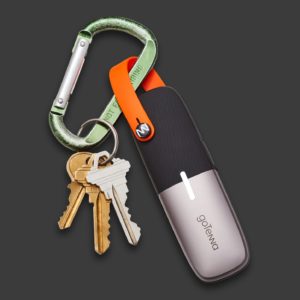Daniela Perdomo realized that without a cellular connection, your phone is basically useless after Hurricane Sandy hit New York in 2012, leaving her without power or internet connection.
Seeing how real this problem was, Daniela began a tech startup called goTenna. Her devices are candy-bar sized transmitters that can send text messages even if there is no cellular connection.
goTenna’s techn ology has a much broader application than people living in the aftermath of a hurricane. Recently these devices have been used by first responders, the military, and even the Department of Homeland Security.
ology has a much broader application than people living in the aftermath of a hurricane. Recently these devices have been used by first responders, the military, and even the Department of Homeland Security.
The company uses what is called “mesh networking” which expands by connecting users on a peer-to-peer basis. These small devices are built to be portable and can be attached to a backpack using a small clip. The price of one of these transmitters is $179, and is becoming more accessible than ever to consumers with a constantly expanding network.






